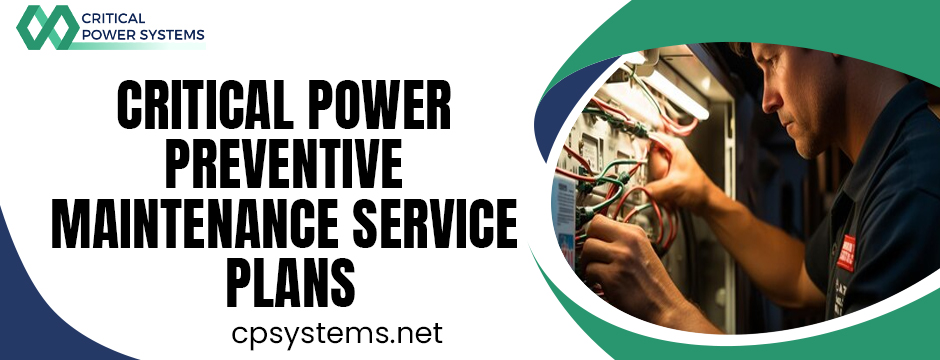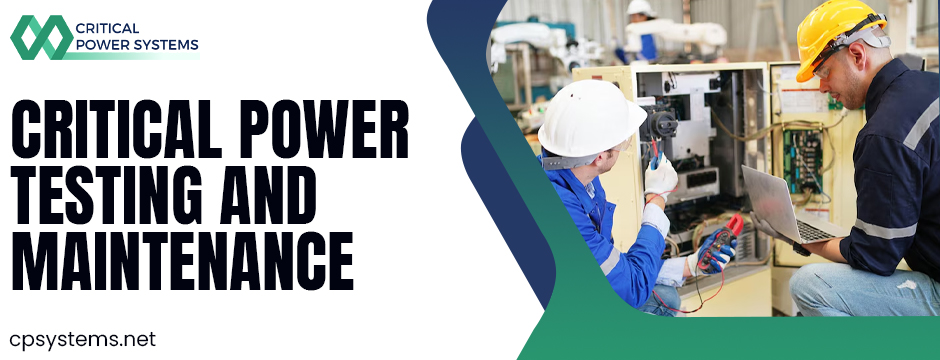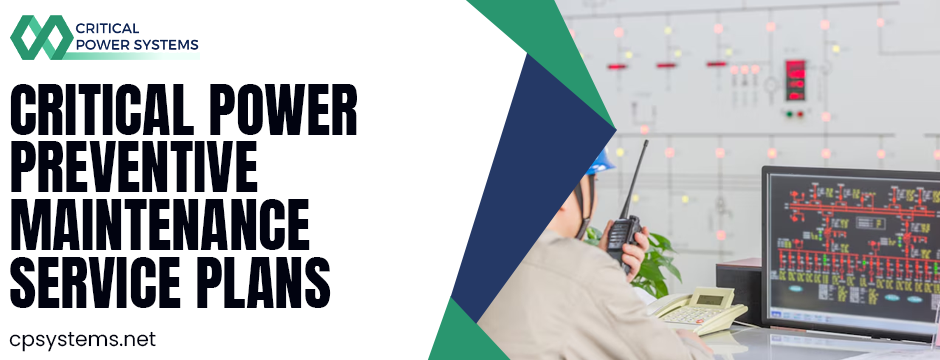Let’s be honest—power maintenance doesn’t usually top the list of exciting topics for most business owners or facility managers. But if you’ve ever dealt with a sudden power outage, failed generator, or UPS battery failure right when you needed it most, you know it’s not something to take lightly.
At Critical Power Systems, we’ve worked with everyone from small commercial offices to mission-critical data centers. And if there’s one question we hear over and over, it’s this:
“How often should we schedule maintenance—once a year or every quarter?”
The answer? It depends. But that doesn’t mean it’s complicated. Let’s break it down in plain English, weigh the pros and cons of each, and help you figure out what’s really best for your situation—not just what’s industry standard.
Why Routine Maintenance Isn’t Optional Anymore
We get it. You installed a reliable power system—whether it’s a UPS setup, backup generator, or both—so you could stop worrying about outages. But here’s the reality: even the most expensive, top-of-the-line equipment can (and will) degrade over time. Dust builds up. Connections loosen. Batteries weaken. And these issues don’t announce themselves with flashing lights and sirens—they quietly chip away at your system’s reliability.
That’s where critical power preventive maintenance service plans come in. They’re not about fixing things after they break—they’re about keeping things from breaking in the first place. Think of it as the difference between getting an annual physical and waiting until something’s wrong to go to the doctor.

The Case for Annual Maintenance
If you’re like most companies, you probably already have an annual maintenance agreement in place. And there’s a good reason for that—it works. Especially if your power system is relatively new, lightly used, or just serves as a backup in case of emergencies.
Pros:
- Cost-effective: One service visit per year keeps the upfront expense low.
- Minimal disruption: No one likes surprise service calls. An annual plan makes it easier to schedule and plan ahead.
- Sufficient for some setups: In low-risk environments, like small offices or retail stores, yearly checkups may be all you need.
Cons:
- Long gaps between checks: A lot can go wrong in 12 months. Dust, battery decay, and environmental factors don’t take breaks.
- Not ideal for older systems: Aging equipment needs more attention.
- Seasonal blind spots: If your checkup happens in winter, are you sure your system will handle summer heat or monsoon conditions?
When Quarterly Maintenance Is the Better Choice
Quarterly maintenance isn’t just for hospitals and airports—it’s for any operation where power failure equals major disruption. We’ve seen businesses lose six figures in a single hour of downtime. The cost of more frequent service is peanuts compared to that.
Pros:
- Early detection of problems: Catching issues in Q1 means you’re not dealing with a full-blown failure by Q3.
- Better battery care: Batteries are the Achilles’ heel of most UPS systems. Regular testing keeps surprises at bay.
- Improved compliance: Many standards, like NFPA 110 for generators, encourage or require quarterly checks.
- Peace of mind: If power is non-negotiable for you, quarterly plans are your best insurance policy.
Cons:
- Higher upfront cost: You’re paying for more service visits, plain and simple.
- Tighter scheduling: Your team needs to be ready to coordinate four times a year, which can feel like a lot.
So, Which One Should You Choose?
Here’s where things get interesting. There’s no one-size-fits-all answer, and anyone who tells you otherwise hasn’t seen your facility. But based on what we’ve seen across hundreds of clients, here are some industry-specific recommendations:
Healthcare (Hospitals, Clinics, Labs)
- Go with: Quarterly
- Why: In healthcare, power isn’t just critical—it’s life-saving. Regulators and insurance providers both lean heavily toward more frequent checks.
Data Centers and IT Facilities
- Go with: Quarterly
- Why: Downtime here doesn’t just cost money—it can destroy data and violate SLAs. If uptime is part of your brand promise, don’t gamble.
Manufacturing and Industrial Plants
- Go with: Quarterly or Biannual
- Why: If production lines go down, the ripple effect is massive. Plus, machines operating in hot, dusty, or high-vibration environments wear faster.
Commercial Buildings, Offices
- Go with: Annual
- Why: If your tenants or operations can tolerate a short interruption, annual might be fine—especially with a newer system.
Retail Stores, Warehouses
- Go with: Annual
- Why: If you don’t rely on refrigerated storage or mission-critical equipment, one checkup a year often does the trick.
From a Business Angle: Is More Maintenance Really Worth It?
Let’s talk numbers.
- The average cost of a UPS failure? $50,000+
- The cost of lost inventory during a power outage? Depends on your stock—but usually not small.
- The cost of quarterly service? Often less than 1% of what one failure might cost you.
If you’re running a tight ship and your budget’s under scrutiny, it’s tempting to save a few bucks by going annual. But here’s the hard truth: when systems fail, it’s rarely at a convenient time. It’s during storms, brownouts, or weekends—when technicians are hardest to reach and replacement parts take longest to arrive.
If your brand can’t afford that kind of exposure, the answer is clear.
What Does a Typical Maintenance Visit Include?
Whether you choose annual or quarterly, you should expect more than just a technician with a clipboard. A quality critical power testing and maintenance session usually includes:
- Visual inspections and thermal imaging
- Load bank testing (for generators)
- Battery resistance testing and replacement advice
- UPS firmware updates and diagnostics
- Transfer switch testing
- Clean-up, documentation, and full post-service reporting
It’s also a chance to ask questions, talk about system performance, and plan ahead for replacements or upgrades.

Quick Self-Assessment: What’s Right for You?
Ask yourself:
- Can I afford even a 30-minute power outage?
- When was the last time we tested the entire system under load?
- How old are my batteries and UPS units?
- What’s my industry’s compliance standard?
- Do I sleep better knowing my backup power will kick in without fail?
If you hesitate on any of those questions, quarterly maintenance may be the safety net you didn’t know you needed.
Final Thoughts: Risk vs. Reliability
There’s a reason this topic matters. Your power system is the backbone of your operation—and the best time to maintain it is before you ever need it. Whether you stick with annual or switch to quarterly, the most important thing is not putting it off.
At Critical Power Systems, we work with businesses every day to build custom critical power preventive maintenance service plans that actually fit their operations. No upselling, no pressure—just real solutions for real businesses.
Let’s make sure your system performs when it matters most.
FAQs
Q1: What happens during quarterly maintenance that doesn’t happen annually?
Quarterly service gives technicians a better chance to catch seasonal issues, battery decay, and minor wear before it becomes major failure.
Q2: Is quarterly maintenance required by law?
In some industries like healthcare and telecom, it is either required or strongly recommended. Always check your compliance guidelines.
Q3: Can I upgrade my plan later if I start with annual maintenance?
Yes! Many clients start with annual and switch to quarterly as their system ages or their operational needs grow.
Q4: How long does a maintenance visit take?
It depends on your system size, but most visits take 2–4 hours. Larger facilities may require a full day.
Q5: Do you offer emergency support along with maintenance plans?
Absolutely. Our service plans can include emergency call-out options, SLAs, and remote monitoring packages for full peace of mind.
Would you like us to create a tailored plan for your facility or review your existing one? Our experts at Critical Power Systems are happy to help—no pressure, just practical advice.

